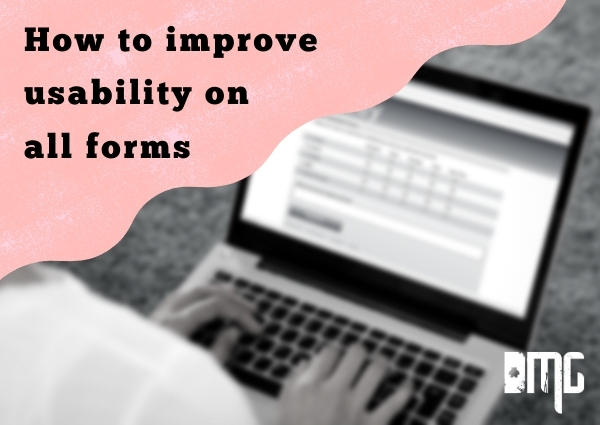Improving website forms: How to improve usability on all forms
 https://www.omahamediagroup.com/images/uploads/monster_gallery/Omaha-Media-Group-Black.jpg
https://www.omahamediagroup.com/images/uploads/monster_gallery/Omaha-Media-Group-Black.jpg

With 86 percent of forms on a website getting filled out at least 10 times a day, it is imperative that all website forms and their usability are at the forefront of design. The thing is, a pretty website form isn’t enough, a website form needs to be functional and to the point. The thing is, we have all encountered a website form that was less than functional.
As an agency or consumer, we have all filled out website forms that are less than usable. You enter information into the form only for it to error out. Another scenario is that the page breaks, yup that is the best.
Even the Transportation Security Administration (TSA) is not prone to having a less than ideal form because it breaks all form usability guidelines that have been set in place over 15 years ago!
Yes, just like website accessibility, a website’s various forms have to follow similar guidelines set in place. One of the biggest sales funnels drop off one website does deal with the final set in their customer journey.
With this in mind, how can a company make sure their website forms are user friendly and helping with their leads versus losing them?! Here are our web form usability tips!
-
Follow UX (user friendly) design methods
Website form user experience (UX) design methodologies ensure that the overall function of the website is pleasing to the user.
No matter the end goal of the website itself, the purpose of the website form is to get consumers to enter their email, their credit card information or information for an exploratory conversation, but with a bad UX design in place, this likelihood gets lower.
Forms continue to be one of the most important elements on websites and the overall design needs to be just as effective as your form.
The entire goal of a form is to get that final goal filled out, and less is more in the form field. It is important to stick to the information that is needed and nothing more or less! Any words, images, text, characters or boxes that aren’t necessary should be omitted because it removes any confusion that could take place and make skimming the content easier. Admit it, you don’t read all of the content.
Another bonus to making sure that all form usability offers add in auto-fill options. This helps to speed up the process and enter any saved information that a consumer would already have on their computer or smartphone!
-
Single columns are better
Multiple columns on a website break the easy to skim and scroll options that break a consumer’s direction and it is a pain on mobile devices to have to utilize or navigate through several different columns.
With consumers wanting to spend two minutes or less filling out any form on your company’s website, the Z pattern with multiple forms columns slows down a user’s reading and entering information into the website.
One of the first impressions of a website is the determining factor between that form being filled out or not. It really is that simple. Not only does a mobile friendly website make the difference between a lead or goal filled out, this includes the forms on the website.
Desktop:
Mobile:
This is because mobile device search is on the rise with the implementation of smartphones over the last decade. The same notions that are in place with a responsive design for mobile devices continue throughout the entire website including any forms.
However, the form would look on a laptop or desktop computer it should automatically reconfigure and work properly on a smartphone. Yes, there are still plenty of websites out there that are not mobile friendly and their elements on their site are included in this.
A call to action (CTA) is something that each step of the marketing process needs to be successful. Oftentimes a company assumes that because consumers are technologically savvy that they know the next step. The thing is, this isn’t always the case. A consumer still needs to be told to “click this button” or “download the case study here.” A clear and concise CTA could be the difference between another abandoned form or a new customer.
Ever start to get frustrated with an online form of any sort when you hit “submit” and for whatever reasons it doesn’t work. There is an error, but it doesn’t tell you where the error is? This is why inline validation needs to be set in place for longer than normal forms on websites.
This shows consumers the exact issue with the information on the form. Even if the passwords do not match up, it is important to show this to consumers. The longer it takes to fill out the form, resubmit and try to find the error again the more frustrated the consumer will get, and more times than not, this causes frustration and them leaving the site to find something else.
These are six web form usability tips to the beginning of the design process on a company’s forms. It is important to understand that the right design and updated designs need to be implemented often. Don’t let your website get outdated even for the simple fact that old forms can hinder lead generation!
For help with your company’s website design or redesign, contact us today for a free consultation!
Contact us for more information on website design elements and tips!
For help with your company’s website design or redesign, contact us today for a free consultation!
Contact us for a Zoom meeting!Posted In: Website Design, Website Development




















